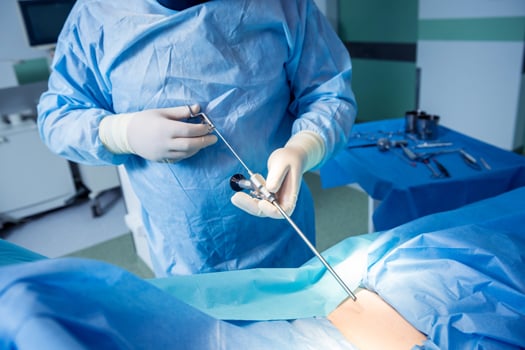
Scar tissue development following any type of back surgery is perfectly normal. In fact, it is part of the healing process. However, it becomes a problem if the scar tissue irritates a nerve near the place where you had your microdiscectomy surgery. This article takes a closer look at what can be done to break up scar tissue if it becomes an issue following microdiscectomy surgery for a herniated spinal disc.
Signs and Symptoms
It is perfectly normal to experience post-surgery discomfort during microdiscectomy recovery. This is also part of the natural process of healing, which can make it difficult to tell if the pain you are experiencing is due to normal healing or the formation of scar tissue. Signs and symptoms associated with scar tissue include:
• Inflammation that could be combined with swelling around the incision site
• Tenderness near the surgical incision
• Pain that always appears when moving
• Limited range of motion
Diagnosis and Treatment
A diagnosis can sometimes be made based on symptoms. If there is some doubt about the cause of your discomfort, you may need an MRI or CT scan so soft tissues can be viewed in detail to locate the fibrous buildup, which is what scar tissue is when it becomes problematic and painful.
Treatment can involve both nonsurgical and surgical solutions for scar tissue after a microdiscectomy. If your discomfort is fairly minor, you may benefit from a routine that involves gentle stretches and movements, which can break up scar tissue. Other treatments not involving surgery include:
• Massage therapy
• Chiropractic adjustments
• Medication to ease inflammation
• A customized exercise routine or physical therapy
Surgery may be recommended if a fibrous band of scar tissue, referred to as an adhesion, develops after the microdiscectomy. Should this happen, surgery would involve the removal of the excess scar tissue and any other scar tissue that could be problematic later on.
It should be noted that scar tissue is rarely the source of post-surgery discomfort following a microdiscectomy or any other type of spinal procedure. With minimally invasive microdiscectomy surgery, it is even less likely you will have scar tissue problems as you recover. The main reason is because the techniques used minimize the disruption of spinal tissues and other tissues near the affected disc. For this reason, it is unlikely scar tissue will form in a way that contributes to any post-surgery discomfort.
Reducing the Risk of Scar Tissue Problems
You cannot stop the development of scar tissue following a microdiscectomy. However, you can take some steps to prevent the accumulation of excess scar tissue. These include:
• Avoiding excess bed rest
• Getting regular exercise
• Walking
• Doing gentle stretching routines
Scar tissue forms differently in each individual. Similarly, pain levels and back surgery recovery time vary among microdiscectomy patients and depend on factors such as disc height and the size of the hole left in the outer ring of the disc after surgery. If the hole in the disc is larger than a standard pencil eraser, the patient has a significant risk of experiencing a reherniation. Patients with a large hole in the outer ring of the disc are more than twice as likely to reherniate after surgery. These reherniations often require additional surgery or even a larger spinal fusion operation. Barricaid is a bone-anchored device shown to reduce reherniations by closing the hole in the disc after a discectomy, and 95 percent of Barricaid patients did not undergo a reoperation due to reherniation in a 2-year study timeframe. This treatment is done immediately following the discectomy—during the same operation—and does not require any additional incisions or time in the hospital.
If you have any questions about the Barricaid treatment or how to get access to Barricaid, you may ask your doctor or contact us at 844-288-7474.
For full benefit/risk information, please visit: https://www.barricaid.com/instructions.


Comments